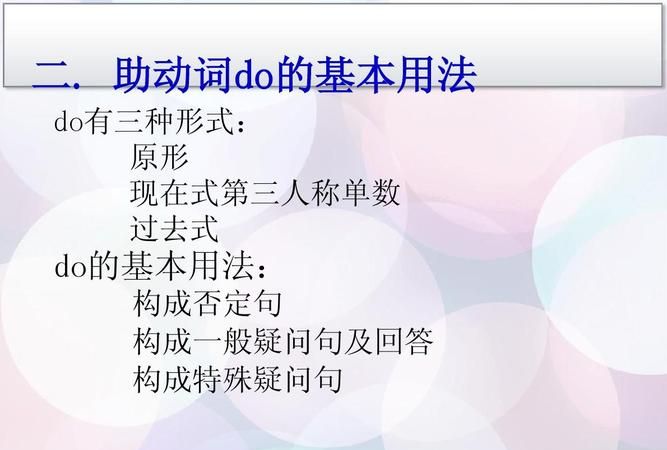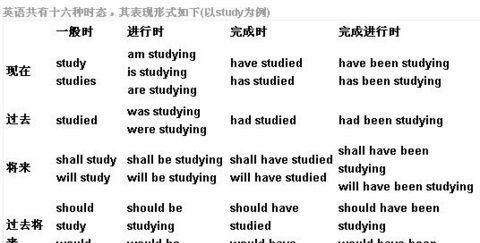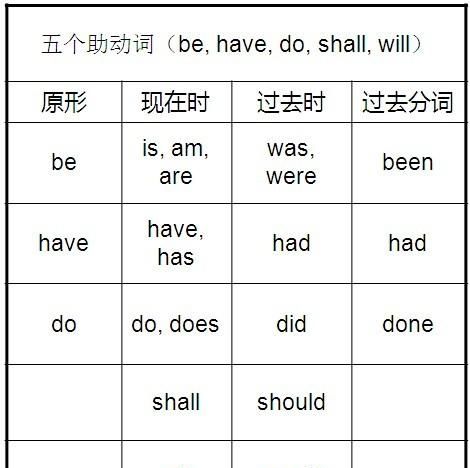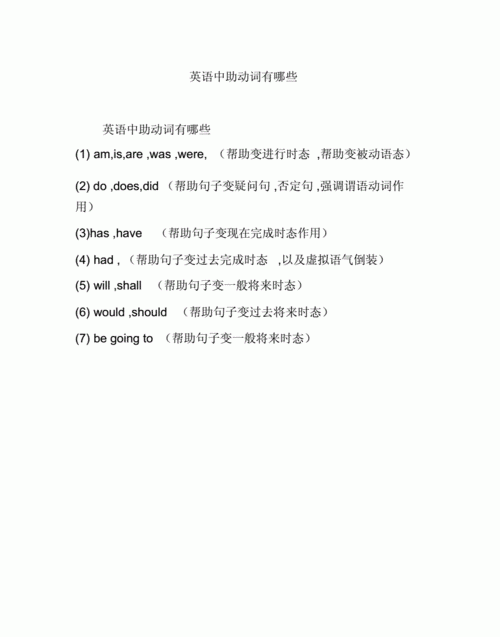本文目录
50个动物英语单词三年级
在及物动词begin, cease, choose, continue, decide, expect, fail, forget, happen, hate, help, hope, intend, like, love, manage, mean, offer, plan, prefer, prepare, promise, refuse, remember, try, want, wish 等后边常用不定式作宾语。
动词不定式也可作介词but, except, save(除......以外)的宾语,但在词组can not but (不由得,只好), cannot help but(不得不), do nothing but(别无它法只有......)后面,接不带 to 的不定式。在except, save 后可带to也可不带 to。
有些动词如allow, advise, ask, beg, believe, can’t bear, call, choose, cause, command, determine, enable, expect, fail, feel, find, force, get, have, hear, help, know, invite, lead, let, like, make, notice, order, prove, request, set, see, teach, tell, think, want, warn, watch, wish等后面常跟动词不定式作宾语补足语。
有些动词如consider, prove, think, know, feel, suppose, discover, imagine, find 等也可跟
“宾语 + to be”的形式,使用中应注意。
学习中要注意积累,我这些仅为参考.加油!


小学三年级上册语文
小学语法总结:
时态 定义 特征 动词的变化规则
一
般
现
在
时 表示经常性或习惯性的动作. every day/morning/…
usually 第三人称单数的变化情况:
1. 一般情况在词尾直接加-s
2. 以ch,sh,s,x或o结尾的词加-es
3. 以辅音字母加y结尾的词,将y改成i再加-es
现
在
进
行
时 表示现在或现在一阶段正在进行的动作. now/ look/ listen 现在分词的变化情况:
1. 一般情况在词尾直接加-ing
2. 以e结尾的词,去掉e再加-ing
3. 以重读闭音节结尾的词,双写最后一个字母加-ing
一
般
过
去
时 表示过去某时发生的动作或情况. yesterday morning/afternoon/evening
last year/month
a minute ago/an hour ago
this morning/afternoon/evening 动词过去式的变化情况:
1. 一般情况在词尾直接加-ed
2. 以e结尾的词加-d
3. 以辅音字母加y结尾的词,将y改成i再加-ed
4. 以重读闭音节结尾的词,双写最后一个字母加-ed
一
般
将
来
时 表示将要发生的事情 tomorrow
the day after tomorrow/
the next day/Monday…
at the weekend/tonight
tomorrow night/morning/afternoon 主要构成
be going to/will + 动词原形
be +形容词
凡是在must, mustn’t, can, can’t, let’s, don’t, may,will后的一定要用动词的原形
二、名词的复数。
名词按其数,可分两种:可数名词和不可数名词.
可数名词的复数变化规则:
1.一般情况下,直接在词尾加-s, 如:girl-girls, book-books, pen-pens
2.以s,x,sh,ch结尾的词,在词后加-es, 如:class-classes, box-boxes, match-matches,
3.以辅音字母+y结尾的,变y 为i 再加-es, 如:city-cities, family-families, country- countries
4.以f或fe结尾的,变f或fe为v再加-es, 如:knife-knives, wife-wives, life-lives,
5.以o 结尾的加-es或-s, 如: radio-radios, tomato-tomatoes, potato-potatoes, zoo-zoos, photo-photos,
6.man-men, woman-women, foot-feet, child-children,
三、形容词的比较级、最高级。
形容词有比较级与最高级之分, 单音节词的变化规则:
1.一般情况下,直接在词尾加-er或-est, 如:small-smaller-smallest, short-shorter-shortest
2.以e结尾的,加-er或-est, 如:large-larger-largest, nice-nicer-nicest.
3.以辅音字母+y结尾的, 变y 为i 再加-er或-est, 如:busy-busier-busiest, heavy-heavier-heaviest.
4.以重读闭音节,一个辅音字母结尾的,双写该字母,再加-er或-est, 如:big-bigger-biggest, thin-thinner-thinnest.
5.多音节的词,前加more, most, 如: beautiful-more beautiful-most beautiful.
6.good-better-best
四、be 动词,助动词。
现阶段be动词形式有: am, is, are, were, was, isn’t, aren’t, weren’t, wasn’t
助动词形式有: do, does, did, don’t, doesn’t, didn’t
※ 1. 在英语句子中进行变化的时候, 有be动词的就在be动词上变化,变 “过去”, “否定”;
否定 过去 否定
am-------am not(第一人称 “I” ) am, is ------ was --------- wasn’t
is ------- isn’t (第三人称) are ------were --------- weren’t
are------aren’t (you和其它人称)
2. 没有be动词的就要加助动词;
否定 过去 过去否定
do -----don’t ------did---------didn’t
does(第三人称单数)-----doesn’t ------did---------didn’t
五.人称代词
主语 物主代词 宾格
形容词性 名词性
I my mine me
she her hers her
he his his him
it its its it
you your yours you
we our ours us
they their theirs them
六.特殊疑问词
What is this?
What is this in English?
What is the matter?
What is the weather like?
What is the country like?
What is she/he/
What do you like?
What What does he do?
What do you have for…?
What colour…?
What class…?
What grade…?
What time…?
What day…?
What do/does/did+…?
How are you?
How old…?
How How many…?
How much…?
How long…?
How do/does/did+…?
Which +n.+ (be动词/助动词)+…?
Whose+ n.+ (be动词/助动词)+…?
Where+ v. (be动词/助动词)+sb. +…?
When +v. (be动词/助动词)+ sb.+…?
Who +v. (be动词/助动词/行为动词)+sb.+…?
Why +v. (be动词/助动词)+ sb. +…?
※有can, will, must这几个词的句子,所有的句型转换都在此词变化
动词的时态
11.1 一般现在时的用法
1) 经常性或习惯性的动作,常与表示频腮度的时间状语连用。时间状语: every…, sometimes, at…, on Sunday。例如:
I leave home for school at 7 every morning. 每天早上我七点离开家。
2) 客观真理,客观存在,科学事实。例如:
The earth moves around the sun. 地球绕太阳转动。
Shanghai lies in the east of China. 上海位于中国东部。
3) 表示格言或警句。例如:
Pride goes before a fall. 骄者必败。
注意:此用法如果出现在宾语从句中,即使主句是过去时,从句谓语也要用一般现在时。
例:Columbus proved that the earth is round. 哥伦布证实了地球是圆的。
4) 现在时刻的状态、能力、性格、个性。例如:
I don't want so much. 我不要那么多。
Ann writes good English but does not speak well. 安英语写得不错,讲的可不行。
比较:Now I put the sugar in the cup. 把糖放入杯子。
I am doing my homework now. 我正在做功课。
第一句用一般现在时,用于操作演示或指导说明的示范性动作,表示言行的瞬间动作。第二句中的now是进行时的标志,表示正在进行的动作的客观状况,所以后句用一般现在时。
返回动词的时态目录
11.2 一般过去时的用法
1)在确定的过去时间里所发生的动作或存在的状态。例如:时间状语有:yesterday, last week, an hour ago, the other day, in 1982等。例如:
Where did you go just now? 刚才你上哪儿去了?
2)表示在过去一段时间内,经常性或习惯性的动作。例如:
When I was a child, I often played football in the street. 我是个孩子的时候,常在马路上踢足球。
Whenever the Browns went during their visit, they were given a warm welcome.
那时,布朗一家无论什么时候去,都受到热烈欢迎。
3)句型:It is time for sb. to do sth "到……时间了" "该……了"。例如:It is time for you to go to bed. 你该睡觉了。
It is time that sb. did sth. "时间已迟了" "早该……了" ,例如It is time you went to bed. 你早该睡觉了。
would (had) rather sb. did sth. 表示'宁愿某人做某事'。例如:I'd rather you came tomorrow.还是明天来吧。
4) wish, wonder, think, hope 等用过去时,作试探性的询问、请求、建议等,而一般过去时表示的动作或状态都已成为过去,现已不复存在。例如:I thought you might have some. 我以为你想要一些。
比较:Christine was an invalid all her life.(含义:她已不在人间。)
Christine has been an invalid all her life.(含义:她现在还活着)
Mrs. Darby lived in Kentucky for seven years. (含义:达比太太已不再住在肯塔基州。)
Mrs. Darby has lived in Kentucky for seven years. (含义:现在还住在肯塔基州,有可能指刚离去)
注意: 用过去时表示现在,表示委婉语气。
1)动词want, hope, wonder, think, intend 等。例如:
Did you want anything else? 您还要些什么吗?
I wondered if you could help me. 能不能帮我一下。
2)情态动词 could, would。例如:
Could you lend me your bike? 你的自行车,能借用一些吗?
返回动词的时态目录
11.3 used to / be used to
used to + do:"过去常常"表示过去习惯性的动作或状态,但如今已不存在。例如:
Mother used not to be so forgetful. 老妈过去没那么健忘。
Scarf used to take a walk. 斯卡夫过去常常散步。
be used to + doing: 对……已感到习惯,或"习惯于",to是介词,后需加名词或动名词。例如:
He is used to a vegetarian diet.
Scarf is used to taking a walk. 斯卡夫现在已习惯于散步了。
典型例题
---- Your phone number again? I ___ quite catch it.
---- It's 69568442.
A. didn't B. couldn't C. don't D. can't
答案A. 本句虽没有明确的时间状语,但从语意上看出,在听的时候没有听懂这个动作发生在过去,因此应用过去时。
返回动词的时态目录
11.4 一般将来时
1) shall用于第一人称,常被will 所代替。will 在陈述句中用于各人称,在征求意见时常用于第二人称。例如:
Which paragraph shall I read first? 我先读哪一段呢?
Will you be at home at seven this evening? 今晚七点回家好吗?
2) be going to +不定式,表示将来。
a. 主语的意图,即将做某事。例如:What are you going to do tomorrow? 明天打算作什么呢?
b. 计划,安排要发生的事。例如:The play is going to be produced next month。这出戏下月开播。
c. 有迹象要发生的事。例如:Look at the dark clouds, there is going to be a storm. 看那乌云,快要下雨了。
3) be +不定式表将来,按计划或正式安排将发生的事。例如:
We are to discuss the report next Saturday.我们下星期六讨论这份报告。
4) be about to +不定式,意为马上做某事。例如:
He is about to leave for Beijing. 他马上要去北京。
注意:be about to do 不能与tomorrow, next week 等表示明确将来时的时间状语连用。
返回动词的时态目录
11.5 be going to / will 用于条件句时,be going to表将来,will表意愿。例如:
If you are going to make a journey, you'd better get ready for it as soon as possible.
Now if you will take off your clothes, we will fit the new clothes on you in front of the mirror.
返回动词的时态目录
11.6 be to和be going to
be to 表示客观安排或受人指示而做某事,be going to 表示主观的打算或计划。例如:
I am to play football tomorrow afternoon. 明天下午我去踢球。(客观安排)
I'm going to play football tomorrow afternoon. 明天下午我想去踢球。(主观安排)
返回动词的时态目录
11.7 一般现在时表将来
1)下列动词come, go, arrive, leave, start, begin, return的一般现在时可以表示将来,主要用来表示在时间上已确定或安排好的事情。例如:
The train leaves at six tomorrow morning. 火车明天上午六点开。
When does the bus star? It stars in ten minutes. 汽车什么时候开?十分钟后。
2)以here, there等开始的倒装句,表示动作正在进行。例如:
Here comes the bus. = The bus is coming. 车来了。
There goes the bell. = The bell is ringing. 铃响了。
3)在时间或条件句中。例如:
When Bill comes (不是will come), ask him to wait for me. 比尔来后,让他等我。
I'll write to you as soon as I arrive there. 我到了那里,就写信给你。
4)在动词hope, take care that, make sure that等的宾语从句中。例如:
I hope they have a nice time next week. 我希望他们下星期玩得开心。
Make sure that the windows are closed before you leave the room. 离开房间前,务必把窗户关了。
返回动词的时态目录
11.8 用现在进行时表示将来
下列动词come, go, arrive, leave, start, begin, return等现在进行时可以表示将来。例如:
I'm leaving tomorrow. 明天我要走了。
Are you staying here till next week? 你会在这儿呆到下周吗?
返回动词的时态目录
11.9 现在完成时
现在完成时用来表示之前已发生或完成的动作或状态,其结果的影响现在还存在;也可表示持续到现在的动作或状态。其构成:have (has) +过去分词。
返回动词的时态目录
11.10 比较一般过去时与现在完成时
1)一般过去时表示过去某时发生的动作或单纯叙述过去的事情,强调动作;现在完成时为过去发生的,强调过去的事情对现在的影响,强调的是影响。
2)一般过去时常与具体的时间状语连用,而现在完成时通常与模糊的时间状语连用,或无时间状语。
一般过去时的时间状语:yesterday, last week,…ago, in1980, in October, just now等,皆为具体的时间状语。
现在完成时的时间状语:for, since, so far, ever, never, just, yet, till/until, up to now, in past years, always等,皆不确定的时间状语。
共同的时间状语:this morning, tonight, this April, now, already, recently, lately 等。
3)现在完成时可表示持续到现在的动作或状态,动词一般是延续性的,如live, teach, learn, work, study, know.。
一般过去时常用的非持续性动词有come, go, leave, start, die, finish, become, get married等。例如:
I saw this film yesterday. (强调看的动作发生过了)

小学三年级英语语法有什么书可以推荐
……小学三年级英语语法 ……小学三年级英语语法 小学三年级英语
(一)情态动词 can can 在英语中有一个特殊的名字,叫做情态动词,表示“能够”, “会”, “能力”后面要跟着表 示动作的动词。没有时态和人称的变化。表示不能做什么的时候,后面加上 not 为 can not,或者缩 写为 can’t。问别人“能…吗?”要把 can 放在句子前面,首字母要大写,句尾别忘加上问号。 例句:—I can swing .I can draw. —She can jump.He can play . —We can touch .They can run. —I can’t sing.You can’t see. —She can’t dance.He can’t hear a car. —We can’t hear an aeroplane. —Can you hear a dog?Can he hear a bus? —Can Lucy write?Can you do it? 将下面各组词组成句子 1.(an,aeroplane,hear,Lucy,can ) 2. (not,he ,dance,can ) 3.? (you,can ,see,what ) 4.(can ,see ,not ,we ,you) 5.. (I ,can ,help ,you ) 6.? (I,can ,do,what) 7.? (you ,can ,hear me) 8.? (you ,can ,dance) 答案:1. Lucy can hear an aeroplane. 2. He can not /can’t dance. 3. What can you see? 4. We can not /can’t see you 5. I can help you. 6. What can I do? 7. Can you hear me? 8. Can you dance? (二)人称代词所属格 . 人称代词表 人称
第一人称 单 第二人称 数 第三人称
我 你 他 她
主格 be 动词及其否定 所有 have/has 及其否定形 助动词及其否定 形式 格, 形 式 形式 容性 物主 代词 I am/am not my have/haven’t do/don’t you he she are/aren’t is/isn’t is/isn’t your his her have/haven’t has/hasn’t has/hasn’t do/don’t does/doesn’t does/doesn’t
宾格
me you him her
它 人名 第一人称 复 第二人称 数 我们 你们
it 人名 we you
is/isn’t is/isn’t are/aren’t are/aren’t
its 人名’ s our your
has/hasn’t has/hasn’t have/haven’t have/haven’t
does/doesn’t does/doesn’t do/don’t do/don’t
it 人名 us you
第三人称 他们,她 they are/aren’t their have/haven’t do/don’t them 们,它们 注意:主格作主语 作主语,其中 指带代国家,it 可指代天气时间等。 注意:主格作主语 其中 she 指带代国家 可指代天气时间等。 宾格作宾语 介词宾语, 作宾语, 动词后面用人称宾格 宾格作宾语,介词宾语,表语 。动词后面用人称宾格 形容词性物主代词作定语。 形容词性物主代词作定语。 名词性物主代词作主语,宾语 介词宾语,表语 宾语,介词宾语 名词性物主代词作主语 宾语 介词宾语 表语 书信 yours… 表示 的,这样的词我们也学习很多了,你能想出来吗? 记住这个小口诀就很容易了:我的 my ,你的 your,他的 his、她的 her. //它的是 its; 我们的 o ur; 你们的是 your 他们(它们,她们)的是 their//这些人称代词形式称为人称代词所属格,也叫形容词 性物主代词。通常用在名词前面表示所属关系。另外,表示某人的还可以用名词或人名+ ’s 来 表示。如: my kite; your book; his pen; her coat; its tail; our class; their teachers; my brother’s; book; the cat’s ears; Mary’s mother 一.写出下列人称代词的所属格形式 IyouheSheit weYouthey 二.用合适的人称代词填空 (1) This is Ben. This is bicycle. (2) I am Kitty. bag is blue (3) She’s Alice. That’s umbrella. (4) You are Mr Li. car is black. (5) Is this hat? Yes, it’s my hat. (6) That’s my mother. That’s coat. (7) Where’s scarf? Here you are. (8) He’s Mr Wang. gloves are new. 三.翻译下列词组 1. 你的名字 2.我们班 3. 他的小弟弟 4.我祖母 5. 它的尾巴 6.我的鞋 7. 她的围巾 8.我的衬衫 9. 他们的老师 10.玛丽的雨伞 四.用下列单词组句 1. (my , is,name , Tom) 2. (is, miss , Gao, , our,friend) 3. (is what ,your number ,telephone) 4.? (mother , your ,a teacher , is)
5.? (who’s , cap , it , is) 答案:一. I(my) you (your) he(his) she(her) it(its) We (our) you (your) they (their) 三. 1.your name 2.our class 3. his little brother 4.my grandmother 5.its tail 6.my sho es 7.her scarf 8.my shirt 9.their teacher 10. Mary’s umbrella 四. 1.My name is Tom. 2.Miss Gao is our friend 3.What’s your telephone number? 4. Is your mother a teacher? 5.Who’s cap is it? (三)介词、连词和感叹词 1.介词:介词是一种虚词,不能单独使用,必须在介词后面加上个名词或代词使用,作句子成份。 介词后面的名词(或相当于名词的其它词)叫做介词的宾语。介词和介词宾语合称为介词 短语。介词短语在句中可作壮语、定语或表语。 介词如: in 在…里面 on 在…上面 under 在…下面等。 in the classroom in the tree in the hall on the road on the desk on the floor under the table under the bed under the chair 2.连词:连词是用来连接词与词、短语与短语、句子与句子等的词叫连词。连词是一种虚词,在 句子中不能单独作句子成分。连词分两类:一类叫等立连词,另一类叫从属连词。 (1). 等立连词是用来连接同等的词、词组和分句的。等立连词有许多 我们现在只学到了 and 和 but,其他的以后学到再介绍。 如:A and B ; blue and white ;an apple and a banana; a car and a bus; Lucy and Ben ; Ben and Kitty ; This is a lorry and that’s a drill. I like dolls and you like robots. (2). 从属连词是用来引起从句的、从属连词又分为 1) 引起名词性从句的连接词,如:if ,that 等。 2)引起壮语从句的连接词,如:when , after ,befare 等。以后会逐渐学到再介绍。 3.感叹词: 表示说话人的某种感情(惊讶,高兴,痛苦等)的词叫感叹词。感叹词后常用感叹号。常用 的感叹词有:oh(表示惊奇或痛苦),ah(表示惊奇或满意),hello(常被用来打招呼相当于汉 语的“喂!”),well(表示惊讶,无奈) 如:Hello.Are you Mary? 练习:翻译下列词组 1.在桌子上面 2.在树下面 3.在椅子上面 4.在盒子里面 5.在黑板上 6.在书里 7.在脸上 8.在公共汽车上 9.一只猫和一只狗. 10.又小又胖 答案:1. on the desk 2. under the tree 3. on the desk 4. in the box 5. on the blackboard 6. in the book 7. on the face 8. on the bus 9. a cat an d a dog 10. small and fat (四) 单数句和复数句: 口诀: 单数句子变,变化规则要记住。 名词代词要变化,am, is 要变 are。
this, that 变成啥,these, those 来替它。 he, she, it 要变啥,全部变 they 不用怕。 I 要变 we 莫落下,名词后面把 s/es 加。 名前冠词去掉它,其余成分原样加。 具体注意下面的六要素: 1.单数主格人称代词要变成相应的复数主格人称代词,即 I→we; you→you; she, he, it→th 单数主格人称代词要变成相应的复数主格人称代词, 单数主格人称代词要变成相应的复数主格人称代词 ; ; ey。 如: She is a girl.→They are girls. 2. am, is 要变为 are。 如: I'm a student. →We are students. 3.不定冠词 a, an 要去掉 不定冠词 要去掉。如: He is a boy. →They are boys. 4.普通单数名词要变为复数形式 普通单数名词要变为复数形式。如: It is a cat. →They are cats. 普通单数名词要变为复数形式 5.指示代词 this, that 要变为 these, those。如: This is a book.→These are books. 指示代词 6. man, woman 作定语修饰可数名词时,要在 "数"上与被修饰名词保持一致。但其他名词修 作定语修饰可数名词时, 数 上与被修饰名词保持一致 上与被修饰名词保持一致。 性质"时 不作变化。如: 饰名词表示 "性质 时,不作变化 性质 He is a man doctor.→They are men doctors. This is an apple tree.→They are apple trees. 单复数相互转换,每空一词(含缩写)。 1. The woman is a nurse.(改为复数句) The . 2. There are some old cars.(改为单数句) There old . 3. He has a new book.(改为复数句) new . 4. Are these your chicks ?(改为单数句) your ? 5. Is there a sheep in the playground?(改为复数句) there in the playground? (五)一般疑问句及特殊疑问句 句子基本是:简单陈述句,由简单陈述句转变成肯定句,否定句,疑问句。疑问句是用 来提出问题。英语中有四种疑问句: 一般疑问句、特殊疑问句、选择疑问句和反意疑问句。我们 现在已经接触到了前两种疑问句。后两种疑问句以后我们还会学到.
一.一般疑问句: 英语中要用 yes 和 no 来回答的疑问句叫一般疑问句。如: 1)Is it hot ? Yes, it is .\No, it isn’t. 2)Is it a car ? Yes, it is .\No, it isn’t . 3)Is this your ruler ? Yes, it is .\No, it isn’t . 4)Do you like bananas ? Yes, I like bananas. \ No, I don’t like bananas. 5)Can Ming hear a drill ? Yes , Ming can hear a drill.\No,Ming can’t hear a drill. .陈述句(肯定句,否定句,一般疑问句)的转变规律: 陈述句(肯定句,否定句, 一般疑问句)的转变规律: 1.肯定句: .肯定句: 1) 主语+be 动词+…. 2.否定句: .否定句: 1) 主语+be 动词+not+….
—— be 动词引导 —— be 动词引导 —— be 动词引导 —— 含实义动词 ——含情态动词
3. 一般疑问句及肯否定回答 1)be 动词+主语+…? Yes, 主语+be 动词./ No, 主语+be 动词+not.
I am a teacher.
I am
not a teacher.
Are you a teacher? --Yes, I am./ No, I am not.
My mother is thin.
My mother is not /isn’t thin.
Is your mother thin? --Yes, she is./ No, she isn’t.
They are insects.
They are not/aren’t insects.
Are they insects? --Yes. they are./ No, they aren’t.
2) 主语+情态动词 can+… 2) 主语+情态动词 can+ not+….
2)情态动词 can+主语+…? Yes, 主语+情态动词 can/ No,主语+情态动词 can+ not
He can jump.
He can
not/can’t
jump.
Can he jump? --Yes,he can./ No, he can’t.
3) 主语+动词+….
3) 主语+助动词 do/does+not +…. 动词原形
He likes to eat apples. We like to eat apples.
3) 助动词 do/does+主语 +….动词原形? Yes, 主语+助动词 do/does. No, 主语+助动词 do/does+not. He doesn’t like to eat apples. Does he like to eat apples? Yes,he does./ No,he doesn’t. We don’t like to eat apples. Do you like to eat apples? Yes,we do. /No,we don’t.
二. 祈使句:表示请求、命令、建议或劝告等的句子叫祈使句,主语 you 常省略。
1、肯定形式:一般以动词原形开头。 Open the door, please. 2、否定形式:在句首谓语动词前加 Don't。 Don't be late for class. 三 特殊疑问句(又叫 wh-question) 用特殊疑问词来提出问题的疑问句叫作特殊疑问句。特殊疑问词一般要放在句首。常用的 疑问词有 what who ,which how 等这些词都以 wh 开头(包括 how)所以也叫作 wh-question。 特殊疑问句要求回答具体内容。不能用 yes 或 no 回答。结构:疑问词 一般疑问句。回答不能用 结构: 一般疑问句。 结构 疑问词+一般疑问句 回答不能用 yes / no(或相当于 yes / no)回答的问句。答句的句式同肯定句句式:如: 回答的问句。 或相当于 回答的问句 答句的句式同肯定句句式: What can you see ? I can see a cat. What can you hear ? I can hear a bus. What can you do ? I can sing and dance. What is it ? It’s a panda. What do you like ? I like playing football How old are you ? I’m ten. 一.将下列句子变成一般疑问句 1 Mr Wang is thirsty ? 2.The elephent’s ears are long ? 3. We like birds ? 4.Hello.You are his mother ? 5.I can sing and dance. ? 二 将下列每组词各组成一句特殊疑问句 1.(you are how). ?. 2.(old how Ben is)? 3.colour is what your shirt? 4.(can see what the on you desk ) ? 5.(like what do you)? 答案:一.1. Is Mr Wang thirsty? 2. Are the elephent’s ears long 3. Do you like birds? 4. Hello. Are you his mother? 5.Can you sing and dance? 二.1. How are you? 2.How old is Ben ? 3.What colour is your shirt? 4.What can you see on the desk? 5.What do you like?
1

以上就是关于三年级英语助动词有哪些 ,50个动物英语单词三年级的全部内容,以及三年级英语助动词有哪些 的相关内容,希望能够帮到您。
